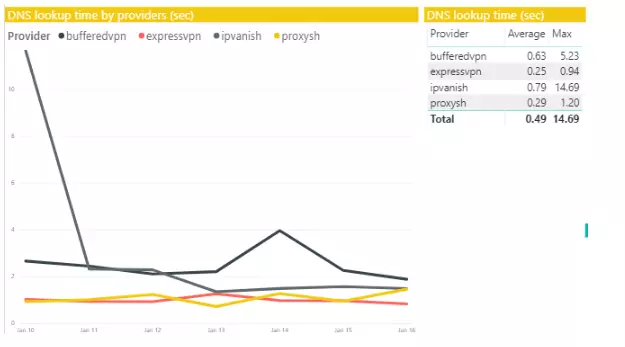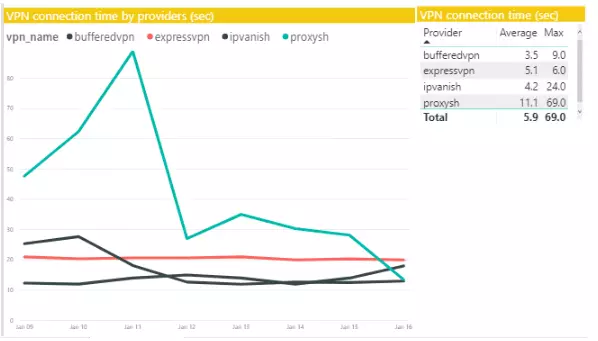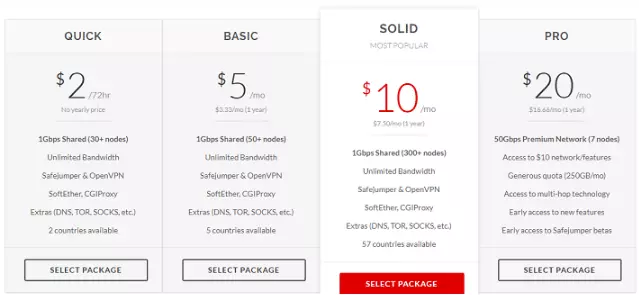Alternative Choices for You
|
|
From $6.67 |
ProPrivacy.com Score
9.6 out of 10
|
Visit Site Read review |
|
|
From $3.69 |
ProPrivacy.com Score
9.4 out of 10
|
Visit Site Read review |
|
|
From $2.19 |
ProPrivacy.com Score
8.6 out of 10
|
Visit Site Read review |
Proxy.sh is a competent VPN service that you can use to access sites in a large number of countries. Or you can opt for a discounted version with limited server access. This VPN service is run by a not-for-profit company based in the Seychelles. The staff of the VPN company are spread across the globe, which gives the service round-the-clock attendance.
Features
Routers supported
Server locations
57
Simultaneous connections
3
Total servers
300
The features of the company's package are:
- Refunds possible
- Allowance of three simultaneous connections
- OpenVPN, L2TP, and PPTP protocols
- Custom app for OpenVPN
- No logs
- Anonymous payment options
- No data throughput limits
- P2P allowed
- Multilingual website and app
- Works on Windows, Mac OS X, macOS, iOS, Android, and Linux
- Can install on routers and set-top boxes
- Can connect to Tor
The Terms of Service on the Proxy.sh website specifically ban the downloading of copyrighted material without permission from the copyright holder. The Knowledge Base includes articles that have tips on how to use the VPN with uTorrent, Vuze, and BitTorrent, however. There is no explicit statement on the main pages of the site that states whether or not file sharing is allowed.
Subscribers to the Solid and Pro packages get access to the service's entire network of servers in 57 countries. The Basic package gives you servers in the USA and the Netherlands, and the Basic package gets you servers in the USA, the UK, the Netherlands, France, and Germany.
Speeds and Performance
The page VPN Speed Testing Done Right has a full explanation of our new scientific speed test system.
DNS lookup times can drag down the loading speeds of a web page. This is because every web address that you type into your browser has to be translated into an internet address by a DNS server before you computer can go and fetch the page.

Proxy.sh performed very well on this when compared against three of the major players in the industry: ExpressVPN, Buffered, and IPVanish. In the data set shown above, Proxy.sh competes with ExpressVPN to be the fastest, and it often wins.
However, a look at the chart of the amount of time each VPN service takes to establish a connection shows that Proxy.sh has had some problems in this department.

The most recent data shown in the graph indicates that the company may have ironed out its connection establishment problems, because in the last date of the study, it came in only slightly slower than IPVanish and faster than ExpressVPN and Buffered.
I connected to the Proxy.sh United Kingdom Hub. I discovered the true location of the server with IPLocation.net. This site lists results from five different location databases. All of these reports located the server in London.
Leak tests
ProPrivacy.com SpeedTest (average)
N/A
Speed
N/A
The test sites ipleak.net and our own leak testing tool reported on the detected IP address of my connection and the DNS servers that the system accessed. IPLeak saw my location as being in London, but noted calls to 60 DNS server addresses, all of them in Belgium. DoILeak also located me in London but noted that the DNS servers accessed by my computer were all in the Netherlands. This is a common situation with IPLeak reporting DNS servers in Belgium, with DoILeak spotting DNS servers in the Netherlands. However, none of these tests reported my true location, which was in the Dominican Republic.
My internet service provider does not use IPv6 addresses and so I was unable to test for IPv6 leaks.
Pricing and Plans
The main package offered by Proxy.sh gives you access to a network that has speeds of up to 1Gbps. You can also pay for the more expensive Pro package which has some nodes that run at 50Gbps. If you don't need access to all of the 57 server location countries offered by the Solid package, you can get a cheaper version of the service that just includes a few locations. The Basic package gets you access to servers in the United States, the UK, the Netherlands, France, and Germany. An even cheaper option is the Quick package, which only has access to servers in two countries -- the United States and the Netherlands.

Each package has certain subscription period options. The Pro package can be taken out on a monthly subscription for a yearly plan. With the Solid and Basic packages you get a choice of signing up on a monthly, annual, or bi-annual basis. The Quick package is only available for a 72-hour (three-day) period.
If you take out the Solid package you can pay extra for faster connections on some routes, and also get the option to pass the connection through two servers, this is called "double hop" - it further obfuscates the user's real location. These options are included in the Pro package.
Proxy.sh accepts lots of payment types, some of which give you anonymity. You can also opt to buy "tokens" which are credits that can be gifted, traded, or used. In the case of tokens, you don't give any personal details at all when you create a VPN account. Proxy.sh does not retain any information on token buyers, so there is nothing on file about these customers. However, that anonymity loses you the right to customer support. This VPN accepts a lot of different cryptocurrencies, including Bitcoin, Litecoin, Ether, and Dogecoin.
Privacy and Security
Kill-switch
Obfuscation (stealth)
WebRTC leak protection
Proxy.sh has put a lot of work into making its procedures compatible with privacy. The company called in expertise from the Electronic Frontier Foundation and Harvard's Berkman Center to improve its privacy policy.
The company's privacy policy is concerned more with data collected on visitors to the website than the information retained on the connections of users. The company states that it hangs its usage records on an identifier formed by the user's email account and payment type. This means that those who create "burner" webmail accounts or those that pay with tokens are untraceable. The company does not store its logs with reference to the customer's IP address. This is very good news. If you play smart, paying with an anonymous payment type and using an untraceable email account, you can, in theory, never be traced.
It is a shame that the company does not allow file sharing. However, given that the company states that it does not track user activities, it is difficult to work out how it would know when customers are downloading files with the BitTorrent system. It seems likely that they don't and that the stipulation is just there to cover their backs legally.
The kill switch protects your identity because it blocks off the internet on your device if the VPN is not operating. This sounds like an inconvenience, but, actually, it will only ever affect your internet access for a few minutes at a time. This feature is particularly necessary if your internet connection drops and then comes back quickly. This break in service can be just enough to disconnect the VPN. However, all the apps that were communicating on the internet will continue with their work. If the VPN is not in place, those transmissions will be sent out with your real internet address and not the fake address assigned to you by the VPN. So, the kill switch holds up all of those messages until they can be sent down the re-established tunnel to the VPN server. So, even though you can cut out the Safejumper app and use the OpenVPN interface, it isn't a good idea to do so.
Encryption Protocols
Other protocols
ECC, Serpent
PPTP
L2TP/IPSec
SSTP
IKEv2
OpenVPN
The Proxy.sh service has a lot of security options, including the PPTP and L2TP VPN protocols, which can be set up on a computer or mobile device manually. The best encryption option that the company offers is OpenVPN. This is the best VPN encryption on the market and our recommended protocol at ProPrivacy.com.
Proxy.sh has its own app, called Safejumper. However, this requires the installation of the standard OpenVPN interface, which is produced by the organization that manages the OpenVPN standard. You could just access the VPN through this interface and not bother with the Safejumper app. However, bypassing Safejumper denies you access to an important extra security measure that Proxy.sh built into their custom app - a kill switch.
The encryption used in the Proxy.sh OpenVPN implementation is very strong. The OpenVPN standard offers a lot of options for encryption and Proxy.sh opted for the best. AES was commissioned by the US government, which needed to find a method to protect sensitive communications. Some people are suspicious of AES because they assume that secret service spooks would have ordered a backdoor be built into the methodology. If you hold these doubts, you should use the L2TP service instead. This VPN protocol is only available for manual set up. The other system offered by Proxy.sh is PPTP. This is an old VPN methodology that is no longer considered to be secure.
Ease of Use
Windows
macOS
iOS
Android
Linux
The home page of the Proxy.sh website is striking but short. You won't get much information from this page because it is the storefront of the service. The Proxy.sh site doesn't keep a consistent layout. The Homepage has a short menu, which is not fixed in the window, so you lose it as you scroll down the page. There are links to far more pages that can be accessed by clicking on the main menu's More item.
Whereas the main menu is perhaps a little too short, this extra menu is probably a little too detailed. The How It Works, Pricing, and About Us pages keep the top menu in sight at all times. These pages also have a very large footer section. In all footers, you get the option to change the site language. The language change leverages Google translate - so it's probably not great.
The Client Area menu option can only be accessed by those who have subscribed to the service. However, the facilities of the Client Area can be accessed from the More menu or from the back pages' footer -- all except for the "My Account" page. One of the facilities of the Client Area that anyone can access is the company blog. This news feature is updated sporadically with explanations of service outages and expansions.
Support
24-hour support
Live chat
Money-back guarantee
One of the Client Area pages that can be accessed by anyone through the footer or the More menu is the Knowledgebase of the site.
The Knowledgebase integrates an FAQ section, which has short answers to a number of common issues. There are also more lengthy articles with detailed instructions on how to set up the VPN and get your applications to use it properly.
The contact form is straightforward, and this is the only channel you have to get support. The helpdesk is not very fast to respond and you may have to wait a day before you get a reply.
The Process
Signing Up
When you are ready to sign up for the service, go to the Pricing page and click on the "Select Package" button beneath the plan that appeals to you. This will get you into the checkout process. In the first screen of the checkout, you need to select a billing cycle.
You will be shown a summary of your choice. If the order summary looks OK, press the Checkout button to purchase the package. You first need to set up an account, or access your existing account. Next, you need to select your payment type. When you press the Complete Order process, you need to enter your payment details. Confirmation of your order will arrive by email. Once your account is active, you can go to the Download page to get access to the app's installer.
The Proxy.sh Windows VPN client
You get options to download an OpenVPN interface, or the Proxy.sh app, which is called Safejumper. Opt for Safejumper as discussed above. The installer will create a shortcut to the app on your Desktop.
You will need to log in to the system the first time you open the app. The login credentials for the VPN are the same as those for the Client Area on the Proxy.sh website. Your email address is your username and the password is the one you nominated when you set up your account.
Make sure that the "Remember me" box is checked so you don't have to enter these details again. The app is small and has just a few fields of information. In order to change a value in one of these fields, you need to click on it. If you click on the server location field, you will be taken to a back screen, where most of the settings on the main screen can be adjusted. The only main screen field that can't be altered here is the encryption system. If you click on that, you will be taken to the Settings screen.
In the main adjustments screen, you will see a map of the world with the current server location marked on it. The first picklist in this screen gives you the opportunity to select which port on the server your connections will go to, and which transport protocol should be used - TCP or UDP.
It is better to select a UDP port for this setting. The other feature that you need to set in this screen is the server location. When you choose a new location in the server list, the marker on the map will change to show where in the world that place is. To get back to the main screen of the app, click on the colored circle logo. Click on the Settings button to look at more options. Among the options in this screen is the kill switch, which will prevent apps on your computer from connecting to the internet without the VPN being in place. One other option on this screen is the ability to select a session encryption standard.
Curiously, you can't select the type of encryption to use for the data in your VPN connection, only for the control channel, which maintains the connection. Although there are some interesting options in this list, such as Tor, you are better off leaving this setting as "RSA 4096-bit."
Click on the Safejumper logo to get back to the main screen. You just need to hit the Connect button to get the VPN active. Watch the status messages at the top of the app to see when the VPN is connected. The Connect button is replaced by a Cancel button, which is what you need to press to break the VPN connection.
The Jump button in the app is a unique utility of Safejumper and is the app's signature feature. This will connect you to a randomly selected server. However, it is unlikely that you would ever really benefit from this function. Most people need a VPN to appear to be in a specific place, and with the Jump option you lose control over where the VPN will connect to.
If you click on the "X" in the top right corner of the app, the program doesn't shut down. Instead, it switches over to minimized mode. Look at your system tray for the Safejumper icon. You may have to click on the up arrow in order to find it. If you double-click on the icon, you reopen the app. If you just click on the icon once, you get the minimized menu.
The first menu you will see gives access to the VPN via its default settings. You can also access the Settings screen of the app from here. If you hover over "Connect to," you will get a long list of server locations. The app only shows each location as a "hub." However, in the minimized-mode menu, you can drill down one step further to select an individual server. Clicking on one of these servers starts the connection process. A check symbol appears next to the active server once a connection has been established.
Streaming Services
I tested the capabilities of the Proxy.sh service to see whether connecting to its United Kingdom server would get me into British video streaming services. The VPN couldn't get past the proxy detection systems of Netflix and the BBC. However, I was able to watch videos delivered from the websites of Channel 4 and ITV.
I tested the Proxy.sh performance with US video streaming services by connecting to the Illinois Hub. Netflix USA spotted the VPN and so did the website of ABC, so I wasn't able to watch videos from those two websites. I had better luck at the websites of NBC and CBS, though. Both of those sites thought that I was in the United States and didn't detect the VPN.
Take a look at our guides below to unblock the above streaming services
Other Platforms
The PPTP and L2TP services can be set up on just about any operating system. However, PPTP is not available in macOS or iOS beyond version 10, because operating support is not available in those systems.
--ProxySh OS--
The Safejumper app is available for Windows, Mac OS X, macOS, iOS, Android, and Linux. The graphic above shows that you can also use the OpenVPN GUI on Windows and Linux. There is also an app for Macs, called Tunnelblick, which is a generic OpenVPN interface. The company does not mention it, but you can also access OpenVPN on iOS devices with an app called OpenVPN Connect. Android users can download OpenVPN for Android by Arne Schwabe from Google Play.
OpenVPN, PPTP, and L2TP can also be installed on flashed routers.
Final Thoughts
Proxy.sh has excellent privacy features and the company that runs the service seems more committed to internet freedom than its own gain, because it is a non-profit organization.
The Proxy.sh service is well thought out. It has all of the features that you need from a VPN. The price of the main package, the Solid plan, is reasonably priced, given the features of the service.
0 User Reviews
Leave a Review
Thanks for your review!
16 Comments
Write Your Own Comment
Your comment has been sent to the queue. It will appear shortly.

Rod Leathers
douglas replied to Rod Leathers
david
Guy Haiar
Douglas Crawford replied to Guy Haiar
George